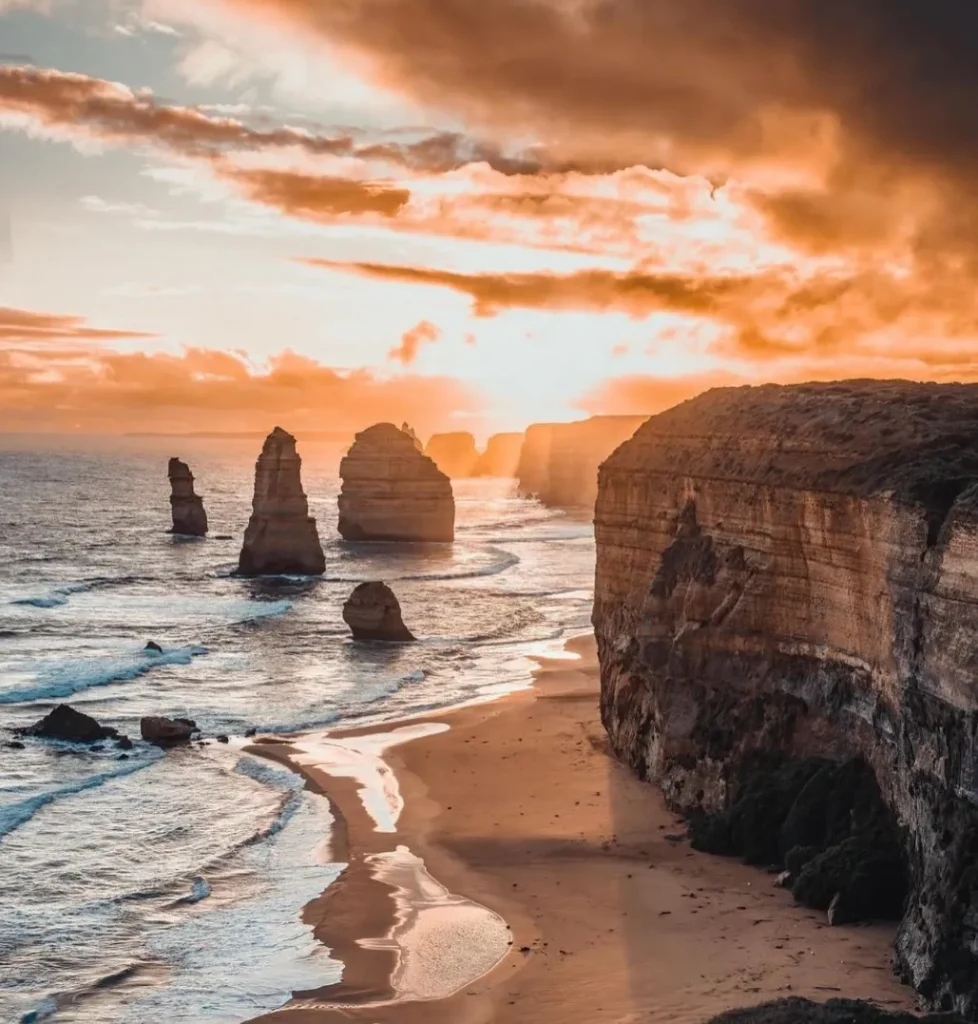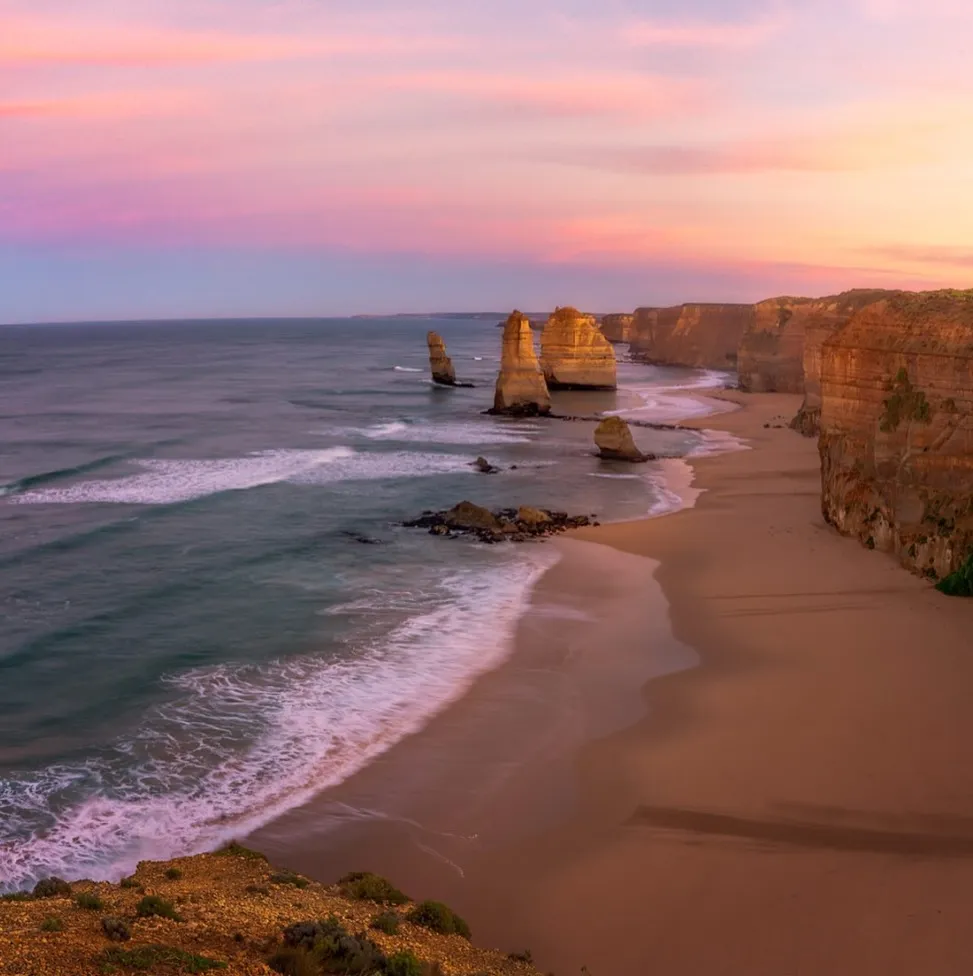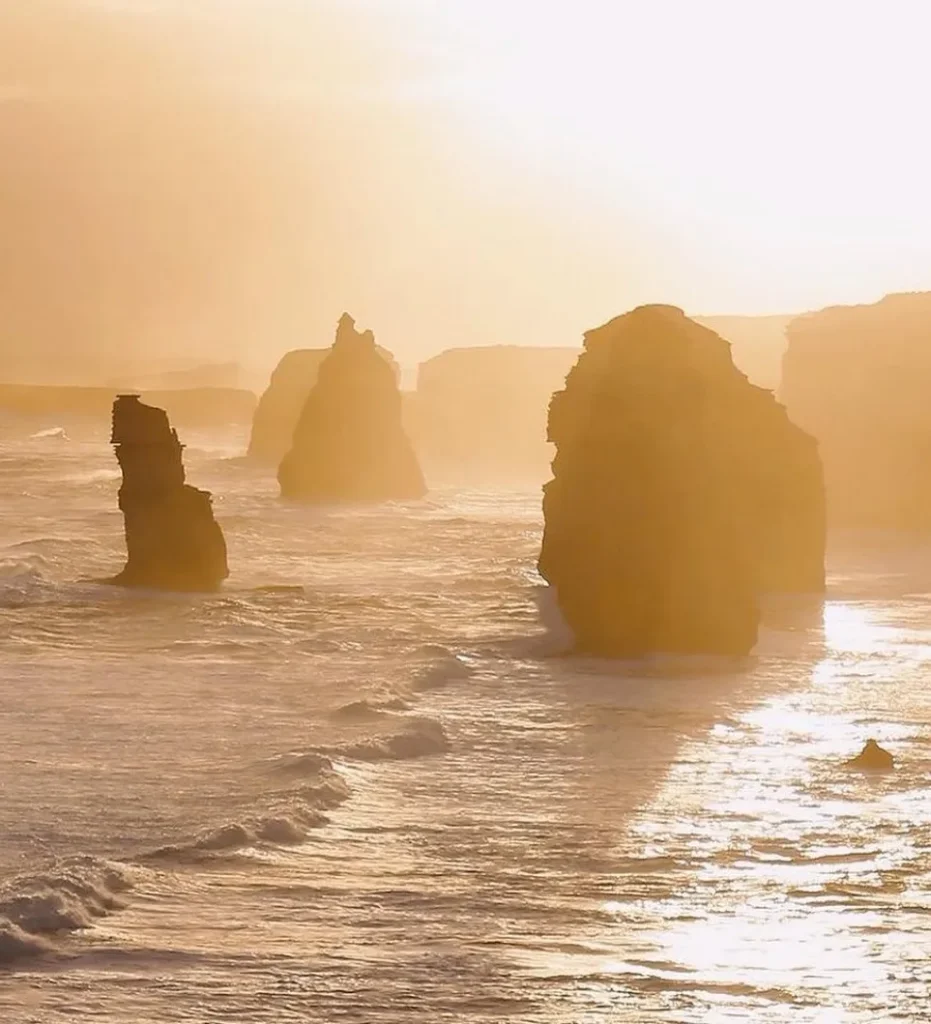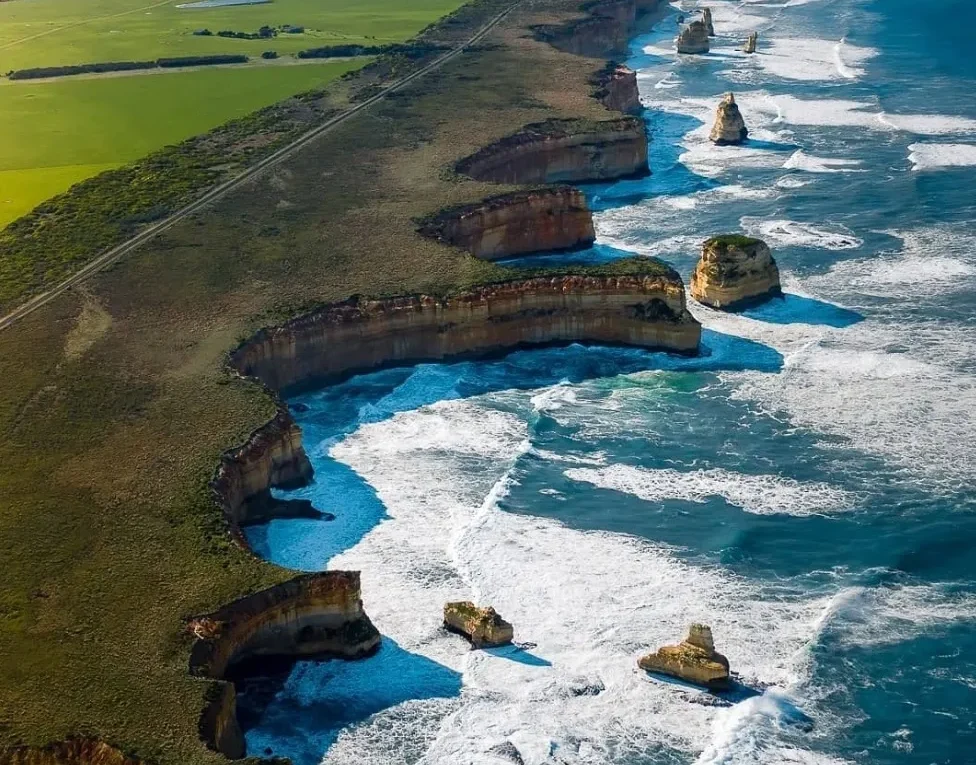The Formation of the 12 Apostles: Nature’s Masterpiece
The 12 Apostles which are found in Australia´s Victoria state, comprise a group of steep and straight rock formations standing along the Great Ocean Road as a beautiful creation of nature and motion of geological activities. This amazing natural wonder regarded as one of the wonders of the world has aroused the interest of many and has remained to be one of the landmarks of Australia.
Geological history and erosion
The twelve Apostles’ story starts with the geological evolution of the regions. Several million years back, this was an extensive shallow sea, though over the years, sedimentation brought forth a limestone formation. The dynamic color resonance of the waves of the Southern Ocean played an important role in making the present landscape.
The cliffs of limestone made by the impact of the waves over the years were also eroded which resulted in the piercing of several caves, arches, and what we see today as sea stacks. At first, the amount of cliff that faced the ocean was substantial, however, over time, sections of the cliff became eroded, leading to remains of high columns now united as the twelve apostles.
Formation of the Sea Stacks

The stunning Sea Stacks were not called the 12 Apostles from the very beginning. This name became common in the early 1900s in regard to the rocks’ splendid and impressive features. The building of these processes consisted of the resurfacing of the cliff face at a slow but steady rate due to the waves. After the limestone wore out from erosion, there stood these hard-rock formations called sea stacks.
Rocks are many, the most being over 45 meters in height (148ft). Each stack has its own size variations which are determined by the wave orientational velocity and strength and the interior structure of the limestone. Due to age; some of these stacks have at other times been eroded away or fallen down and hence changed their position, some, however, have survived. The brilliant shades of the coloured rocks and the changing waters of the Blue Ocean add drama to the stacks that let you see the frame of nature’s portrait at work.
The Role of Erosion in Shaping the Landscape
Erosion has been the only sculptor and the copious destroyer of the 12 Apostles. It has been seen to produce such beautiful structures as well as it is seen to be modifying these structures. The stacks are however perpetually subjected to the action of wind and water, so their morphology is still subject to change.
Erosion takes place due to several aspects such as the intensity of waves, limestone, and weather conditions of the area. Storms, strong gusts, and other influences help to wear the stacks. Furthermore, just as efforts to restore artworks such as ‘Santa Maria delle Grazie’ or ‘The Last Supper’ by Leonardo Da Vinci go on, it presents the fact that even these geological structures are constantly changing.
Vibrant Colors and Breathtaking Beauty

The 12 Apostles are well known for their eye-washing radiant colors and spectacular beauty. The extremely bright colours of the stacks, from golden yellows to brownish-brown, are due to the mineral content of the limestone as a result of erosion processes. These colors are most beautiful at dawn and in the evening where the light highlighting well the stacks is softer.
Also, the breathtaking beauty of 12 Apostles is supplemented by the view of the land and coast. The sight of the high cliffs of limestone and the blue Southern Ocean is picturesque. The visitors of the park get thrilled by the charm and beauty of the natural formations which are hard to forget.
Seasonal Transformations in the Landscape

Port Campbell National Park and the 12 Apostles present a different picture in each of the seasons. The same seasons that change the color of the tree foliage in the park also change the overall feel of the park.
Summer comes and the landscape is complete with green grass and clear athletics, thus the chances of going out for sightseeing and engagement in outdoor activities are high. More visitors visit the park since the seasons are warm making it a busy time within the park.
In fall, it becomes cooler and the leaves begin to change colors with a mixture of yellow, Cranberry and Orange. The colors of the landscape transition to the warm hues of reds, oranges and yellows which provide different views of the twelve apostles.
In winter it is less colorful but more dramatic. The sky is typically cloudy and the seas may be stormy. This season shows the beauty of the park from a different angle with not so many people hence more ease.
At its core spring time signals the return of blooms and the blossoming of many garden plants across the landscapes. It is a delightful period as the scenery is colourful and so are the activities in the park.
Visiting the 12 Apostles

Visitors’ account about their tour to the twelve apostles often contains the following trip highlights:
- Sunrise and Sunset Viewings: Many people find the twelve apostles to be the most beautiful when the sun rises or goes down because of the rich colors of the stacks. Numerous photographers flock here to capture the scene during these times because of the magical light.
- Scenic Flights: A scenic flight over the twelve apostles can be quite a revelation. Those up in the sky get to see the complete views of the stacks and the expansive beach.
- Walking Tracks: The thirty-five different walking tracks in Port Campbell National Park enable visitors to come closer to the twelve apostles and other key sites. The pathways are properly built which often straddles the edges along which growing visitors are provided with startling views and appreciations of the creation and evolution of the park.
These moments amongst others enhance the level of satisfaction derived from a 12 Apostles tour to the twelve apostles and make the trip worth the time and energy.
Conclusion
More than just a cluster of stone, the Twelve Apostles are a living monument and an ever evolving work of nature. How these sea stacks formed many years ago and how they are structured today is more than just a work of nature that adorns the earth. People who appreciate art should know that the twelve apostles are to the universal history of art as the landscapes of known or anonymous women painters of the nineteenth to the eighteenth centuries where the masterpieces. Their bright colors and peaefully cruel forms are memories of the power of nature to create masterpieces.
FAQs
What are the 12 Apostles?
The Twelve apostles in Australia are limestone platforms found along the Great ocean road with undulating waves and an inspiring view.
How were the 12 Apostles formed?
The twelve apostles were a mystery of the erosion of the lion stone cliffs in Southern oceans where waves tunneled caves, arches, and eventually left standing sea stacks.
Where can I view the 12 Apostles?
The twelve apostles in the national park, Port Campbell, can be viewed at several several locations with Port Campbell so that facilities are able to be used.
What is the best time to visit the twelve Apostles?
Midday is the best time to visit when the colors of the stacks are brilliant but sunrise and sunset have remarkable views.
Is it possible to purchase prints/souvenirs of the twelve Apostles?
The 12 Apostles can be purchased in several sizes including frame options in matte white, smooth matte black and in master picture framers.
